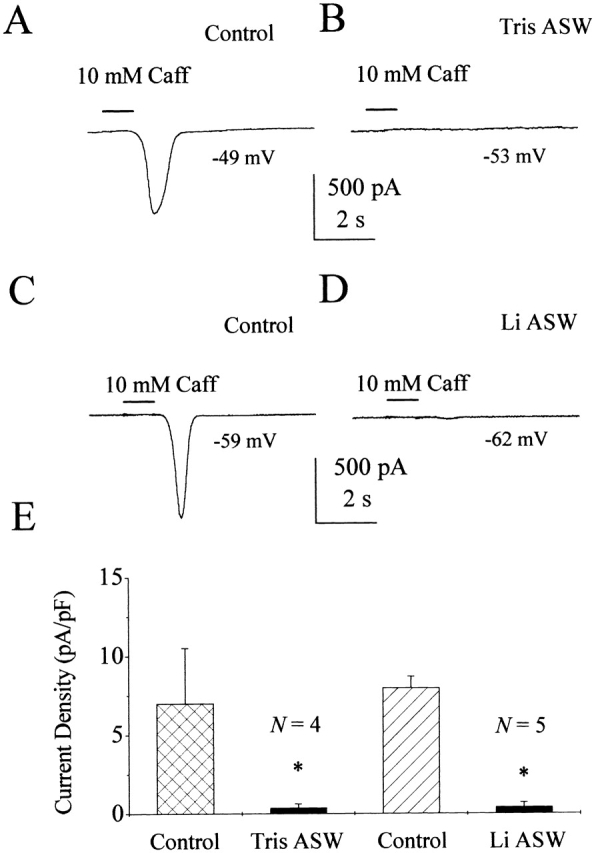Figure 1.

10 mM caffeine activates a sodium-dependent current in nystatin-perforated patched squid ORNs. (A) Current trace from a nystatin-perforated patched ORN during a 1-s application of 10 mM caffeine. Solutions ASW external (ext)/TMA Cl internal (int). (B) In the same cell, replacing external Na+ with Tris+ completely eliminated the caffeine-induced current. Solutions: Tris ASW ext/TMA Cl int. (C) A caffeine-activated current response in ASW from a different cell. Same solutions as in A. (D) Current trace from the cell in C in Li+ ASW. (E) Average current density of caffeine-induced current responses from squid ORNs in ASW, Tris+ ASW, ASW, and Li+ ASW, respectively. The holding potential has been corrected for liquid junction potential and is indicated in each panel. Error bars indicate SD. *P < 0.05.
